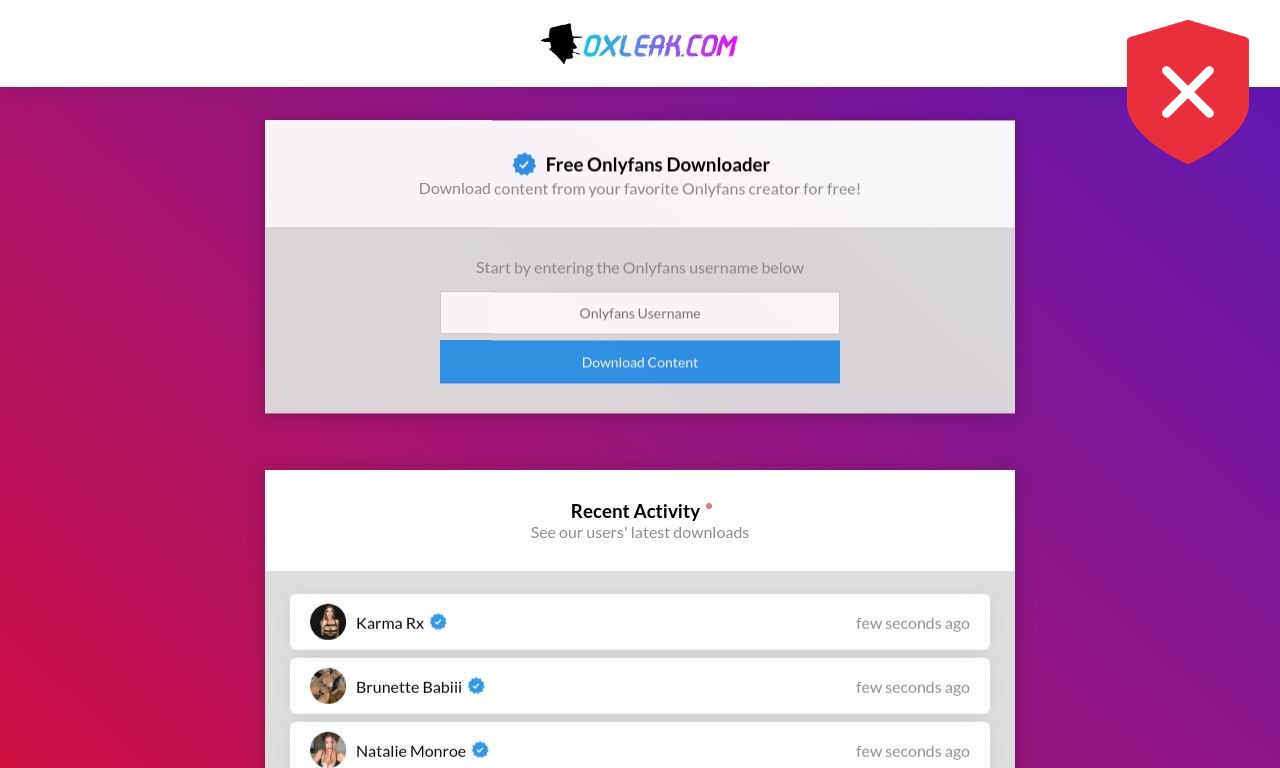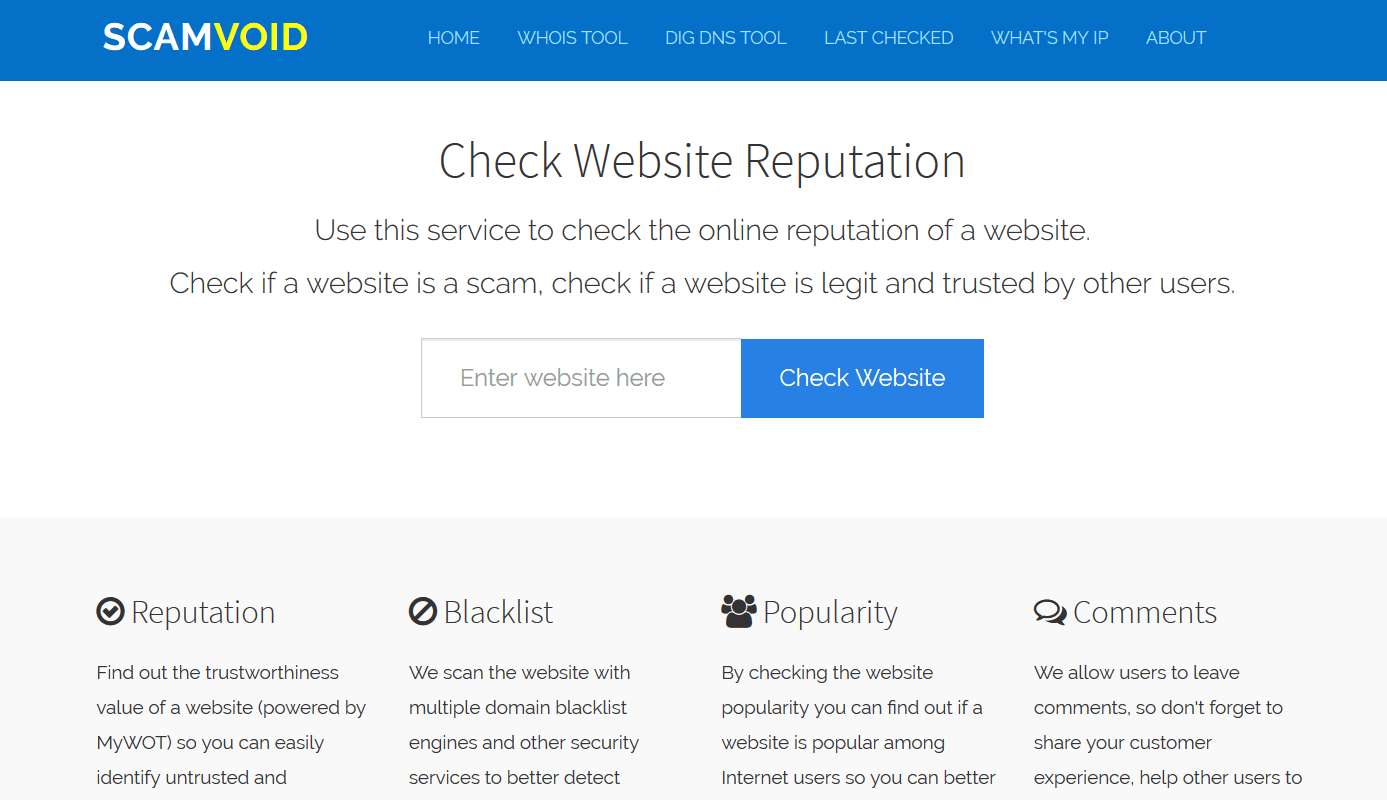In the vast and ever-shifting landscape of the internet, websites emerge, evolve, and sometimes, simply disappear or relocate. One such intriguing case that sparks curiosity is oxleak.com. The very name hints at a purpose centered around information disclosure, perhaps even sensitive data. Yet, a crucial piece of information about this domain is that it "has been moved permanently to a new location." This simple technical redirection, a 301 HTTP status code, speaks volumes about the dynamic nature of online platforms, especially those potentially involved in the delicate realm of data leaks. What does it mean when a site like oxleak.com vanishes from its original digital address, and what lessons can we draw from its relocation in an age where digital information is both powerful and perilously vulnerable?
This article delves into the phenomenon of websites like oxleak.com, exploring the technical, ethical, and societal implications of their existence and eventual migration. We will dissect the reasons behind such permanent moves, examine the broader context of data leaks and their impact on individuals and organizations, and provide insights into navigating the complex world of online information security. Understanding the journey of a domain like oxleak.com is not just about tracing a website; it's about comprehending the transient yet impactful nature of digital footprints and the constant battle for data privacy in our interconnected world.
Table of Contents
- The Enigma of Oxleak.com: A Permanent Relocation
- Understanding "Leak" Sites: The Broader Context
- Why Do Websites Like Oxleak.com Move? Technical & Strategic Reasons
- The Digital Footprint: Tracing Oxleak.com's Legacy
- Protecting Your Digital Life in an Era of Leaks and Shifts
- The YMYL Implications of Data Breaches and Oxleak.com's Nature
- The Future of Information Disclosure: Beyond Oxleak.com
- Navigating the Web's Shifting Sands: Lessons from Oxleak.com
The Enigma of Oxleak.com: A Permanent Relocation
The internet is a vast, dynamic ecosystem where digital entities are born, evolve, and sometimes, simply vanish or migrate. The case of oxleak.com, explicitly noted as having "moved permanently to a new location," encapsulates this digital transience. A permanent move, technically known as a 301 redirect, signals to browsers and search engines that a resource has been assigned a new, definitive URL. For a site with a name like "oxleak," which strongly suggests a focus on information disclosure or potentially sensitive data, such a move immediately raises questions.
What was oxleak.com, and why did it relocate? Without direct access to its historical content, we can only infer based on its name and the common practices of sites dealing with "leaks." Such platforms often serve as repositories for leaked documents, whistleblowing information, or data breaches. Their existence is frequently contentious, balancing public interest in transparency against privacy concerns and legal ramifications. A permanent move could indicate a variety of underlying reasons: a rebranding effort, an attempt to evade legal scrutiny, a strategic pivot to a more secure or anonymous infrastructure, or simply a change in ownership or operational strategy. The very act of moving permanently suggests a deliberate decision, rather than a mere technical glitch or temporary outage. It implies a continuation of purpose, albeit under a new digital guise, or perhaps a complete cessation of its original function, with the domain simply pointing elsewhere. The mystery surrounding oxleak.com is a microcosm of the broader challenges in tracking and understanding the flow of information in the digital age.
Understanding "Leak" Sites: The Broader Context
The term "leak" in a website's name, as seen with oxleak.com, typically refers to the unauthorized disclosure of information. This can range from corporate secrets and government documents to personal data obtained through cyberattacks. "Leak sites" or "whistleblowing platforms" serve various purposes, from holding powerful entities accountable to facilitating malicious data dumps. They often operate in a grey area, championed by proponents of transparency and free speech, yet condemned by those whose privacy or security is compromised.
Historically, such sites have played significant roles in major news events, exposing corruption, human rights abuses, or corporate malfeasance. However, they can also be exploited for nefarious purposes, such as doxing (publishing private information about individuals), facilitating identity theft, or enabling blackmail. The content hosted on these sites can have profound real-world consequences, affecting reputations, financial stability, and even personal safety. The existence of platforms like what oxleak.com might have been underscores the ongoing tension between the public's right to know and an individual's right to privacy, a tension that the internet has amplified to unprecedented levels.
The Ethics and Legality of Data Disclosures
The ethical and legal landscape surrounding data disclosures is incredibly complex, especially concerning sites like oxleak.com. Ethically, whistleblowers often argue that exposing wrongdoing serves a greater public good, justifying the breach of confidentiality. However, this must be weighed against the potential harm to innocent parties, national security, or legitimate business operations. The line between responsible disclosure and reckless endangerment is often blurry.
Legally, the situation varies wildly across jurisdictions. In some countries, whistleblowers are protected by law, especially when reporting illegal activities. In others, they may face severe penalties, including imprisonment, for disclosing classified or proprietary information. The operators of "leak sites" also face significant legal risks, including charges of conspiracy, aiding and abetting, or intellectual property infringement. The permanent move of a site like oxleak.com could very well be a response to such legal pressures, an attempt to operate under a different legal framework, or simply to evade detection and prosecution. The digital nature of these disclosures means that legal battles often span international borders, making enforcement incredibly challenging and highlighting the need for global cooperation and consistent legal frameworks, which are currently lacking.
Why Do Websites Like Oxleak.com Move? Technical & Strategic Reasons
When a website like oxleak.com announces it "has been moved permanently to a new location," it's not a trivial event. This technical redirection (a 301 HTTP status code) is a deliberate action, often driven by a confluence of technical, strategic, and sometimes, defensive reasons. Understanding these motivations sheds light on the challenges and considerations for operators of sensitive online platforms.
One primary technical reason for a permanent move is **rebranding or domain consolidation**. A site might acquire a new, more memorable, or more relevant domain name. For a site like oxleak.com, a rebrand might aim to shed a potentially negative connotation associated with "leak" or to adopt a name that better reflects an evolved mission. Another technical driver is **server migration or infrastructure upgrade**. Moving to a new hosting provider, a more robust server architecture, or a location with better legal protections (or less stringent ones) can necessitate a permanent domain change. This is particularly relevant for sites that anticipate or experience high traffic, DDoS attacks, or surveillance attempts.
Strategically, a permanent move can be a defensive maneuver. Sites dealing with sensitive information, like oxleak.com, are often targets of legal action, government pressure, or cyberattacks. Relocating to a new domain and potentially a new server infrastructure in a different jurisdiction can be an attempt to **evade legal scrutiny, obscure ownership, or enhance operational security**. This "digital nomadism" makes it harder for authorities or adversaries to shut down the operation. Furthermore, a move could be a response to a **security breach** on the old infrastructure, prompting a complete rebuild on a new, hardened system. Finally, a permanent move might simply reflect a **change in ownership or management**, where the new custodians prefer a fresh start under a new digital identity. The decision to permanently redirect from oxleak.com to another address is a strong indicator of a significant shift in its operational paradigm.
The Digital Footprint: Tracing Oxleak.com's Legacy
Even when a website like oxleak.com moves permanently, its digital footprint doesn't simply vanish. The internet, in many ways, has a long memory. While the original content might no longer be accessible at the old address, traces and echoes of its existence can persist across various digital landscapes. This persistence is crucial for understanding the lasting impact of information disclosure platforms and the challenges in truly erasing online data.
The legacy of a moved site like oxleak.com can be found in search engine indexes (even if they point to the new location or show cached versions), in web archives, and in discussions across social media, forums, and news articles that might have referenced it. Every link pointing to oxleak.com from other websites, every mention in a blog post, or every screenshot shared online contributes to its enduring digital footprint. This means that even if the primary access point changes, the historical context and the impact of the information it once hosted can continue to reverberate. For individuals whose data might have been exposed, or organizations that were the subject of disclosures, the permanent move of oxleak.com doesn't necessarily mean the end of their concerns; it merely shifts the point of access for potential new information or continued access to old data.
The Role of Web Archives and Digital Forensics
The concept of a "digital ghost" for sites like oxleak.com is largely enabled by web archives. Projects like the Internet Archive's Wayback Machine continuously crawl and store snapshots of billions of web pages. While not exhaustive, these archives can often preserve versions of websites that have since moved or disappeared. For researchers, journalists, or even law enforcement, these archives serve as invaluable tools for digital forensics, allowing them to reconstruct the history of a website, identify its content, and understand its evolution.
Digital forensics extends beyond simple archiving. It involves the systematic investigation of digital data to uncover evidence. Even if oxleak.com moved, forensic experts might be able to trace its server logs, domain registration history, or associated IP addresses to piece together its operational history and identify its new location. This highlights a critical aspect of online activity: despite efforts to remain anonymous or untraceable, every digital action leaves a trace. The permanent relocation of oxleak.com is a strong signal of a desire for a fresh start or increased security, but it rarely equates to complete erasure from the collective digital memory or the reach of determined investigators.
Protecting Your Digital Life in an Era of Leaks and Shifts
The existence and transient nature of sites like oxleak.com serve as a stark reminder of the pervasive threat of data leaks and the critical importance of robust cybersecurity practices. In an age where personal and sensitive information is constantly at risk, proactively protecting your digital life is no longer optional; it's essential. The "moved permanently" status of oxleak.com doesn't diminish the threat; it merely changes the address where potential risks might originate.
Firstly, **strong, unique passwords** are your first line of defense. Reusing passwords across multiple sites means that if one service is compromised (and its data leaked, perhaps on a site like oxleak.com or its successor), all your accounts are vulnerable. Utilize a reputable password manager to generate and store complex passwords. Secondly, **enable two-factor authentication (2FA)** wherever possible. This adds an extra layer of security, requiring a second verification step (like a code from your phone) even if your password is stolen. Thirdly, be highly skeptical of **phishing attempts**. Malicious emails or messages designed to trick you into revealing personal information are a common precursor to data breaches. Always verify the sender and the legitimacy of links before clicking. Fourthly, **regularly monitor your accounts** for unusual activity, especially financial statements and credit reports. Services that notify you of potential identity theft or data breaches can be invaluable. Finally, be mindful of **what information you share online**. The less personal data you expose, the less there is to potentially leak. For businesses, implementing comprehensive data encryption, regular security audits, and employee training on cybersecurity best practices are paramount to prevent becoming a source for sites like oxleak.com.
The YMYL Implications of Data Breaches and Oxleak.com's Nature
The concept of "Your Money or Your Life" (YMYL) content is critical in the digital sphere, referring to information that can significantly impact a person's health, financial stability, or safety. Data breaches and the information potentially hosted on sites like oxleak.com fall squarely into the YMYL category. When personal data is leaked, the consequences can be severe, directly affecting an individual's financial well-being and personal security. Understanding these implications is vital for anyone navigating the online world.
The "moved permanently" status of oxleak.com, while indicating a change of address, doesn't erase the potential harm caused by any information it might have previously held or that its successor might now host. The very nature of a "leak" site implies the potential for exposure of sensitive data, which can have direct YMYL consequences for individuals whose information is compromised. This includes everything from financial account details to personally identifiable information (PII) that can be used for identity theft, fraud, or even physical harm.
Financial Risks and Identity Theft
One of the most immediate and tangible YMYL implications of data leaks is the significant financial risk. When information like credit card numbers, bank account details, Social Security numbers, or other financial credentials are leaked (potentially via platforms like oxleak.com), individuals become prime targets for identity theft and financial fraud. Fraudsters can open new credit lines in your name, drain existing bank accounts, file fraudulent tax returns, or even make unauthorized purchases. The financial fallout can be devastating, leading to significant monetary losses, damaged credit scores, and years of effort to restore one's financial standing. The cost of identity theft can extend beyond direct monetary loss to legal fees, time off work, and the psychological stress of dealing with the aftermath.
Emotional and Reputational Damage
Beyond financial implications, data leaks can inflict severe emotional and reputational damage. The exposure of private conversations, personal photos, health records, or even just an individual's address and phone number (a practice known as doxing) can lead to immense distress, anxiety, and fear. Victims may experience harassment, stalking, or public shaming. For professionals, the leak of sensitive work-related communications or proprietary information can lead to job loss, damage to their professional reputation, and legal repercussions. The psychological toll of having one's privacy violated, especially when the information is spread across the internet, can be profound and long-lasting. The transient nature of sites like oxleak.com means that while the original source might move, the leaked data can persist and resurface elsewhere, perpetuating the harm.
The Future of Information Disclosure: Beyond Oxleak.com
The story of oxleak.com, a website that "moved permanently," is a small but telling chapter in the larger narrative of information disclosure in the digital age. As technology evolves, so too do the methods and platforms for sharing, and sometimes leaking, information. The future of information disclosure is likely to be characterized by an ongoing tension between transparency and privacy, fueled by advancements in encryption, decentralized networks, and artificial intelligence.
We can anticipate a continued rise in encrypted communication channels and decentralized platforms, making it harder for authorities to monitor or shut down information flows. Technologies like blockchain could potentially be used to create immutable records of disclosures, further complicating efforts to suppress or alter leaked data. On the other hand, governments and corporations will likely invest more in advanced surveillance technologies and legal frameworks to combat unauthorized disclosures. The battle between those seeking to expose information and those seeking to control it will intensify.
Furthermore, the ethical considerations surrounding data leaks will become even more pronounced. As AI becomes more sophisticated, it could potentially be used to analyze vast datasets for patterns of wrongdoing, leading to more targeted and impactful disclosures. However, it also raises questions about algorithmic bias and the potential for misuse. The transient nature of sites like oxleak.com highlights the adaptability of those involved in information disclosure, constantly seeking new digital havens. The challenge for society will be to strike a balance that protects legitimate whistleblowers and promotes accountability, while simultaneously safeguarding individual privacy and preventing the malicious weaponization of data. The lessons from oxleak.com will continue to inform this evolving landscape.
Navigating the Web's Shifting Sands: Lessons from Oxleak.com
The journey of oxleak.com, from an active domain to a permanently redirected address, offers a microcosm of the dynamic and often unpredictable nature of the internet. It underscores several crucial lessons for anyone navigating the digital world, whether as a casual user, a business owner, or a policymaker. The primary takeaway is the inherent transience of online entities and the enduring impact of digital footprints.
Firstly, the internet is not static. Websites, like living organisms, are constantly changing, moving, and sometimes disappearing. Relying on a single source or a fixed address for critical information can be precarious. This emphasizes the importance of digital literacy and critical thinking: always question the source, verify information, and understand that what you see today might be gone or altered tomorrow. Secondly, the "leak" in oxleak.com serves as a powerful reminder of the ever-present threat of data breaches. Every piece of information shared online, whether intentionally or unintentionally, carries a risk. This necessitates a proactive approach to cybersecurity, including strong passwords, two-factor authentication, and constant vigilance against phishing and other cyber threats. The YMYL implications are too significant to ignore.
Finally, the permanent move of oxleak.com highlights the ongoing cat-and-mouse game between those who seek to disclose information and those who seek to control it. This battle shapes the very fabric of our digital rights and responsibilities. As users, we must advocate for robust privacy protections and support ethical information practices. As businesses, we must prioritize data security and transparency. The digital ghost of oxleak.com reminds us that while addresses may change, the underlying challenges of information security, privacy, and accountability remain as pertinent as ever. Stay informed, stay vigilant, and always prioritize your digital safety.
Did you find this article insightful? Share your thoughts on the transient nature of websites and the impact of data leaks in the comments below. For more in-depth analyses of cybersecurity and digital privacy, explore other articles on our site.



